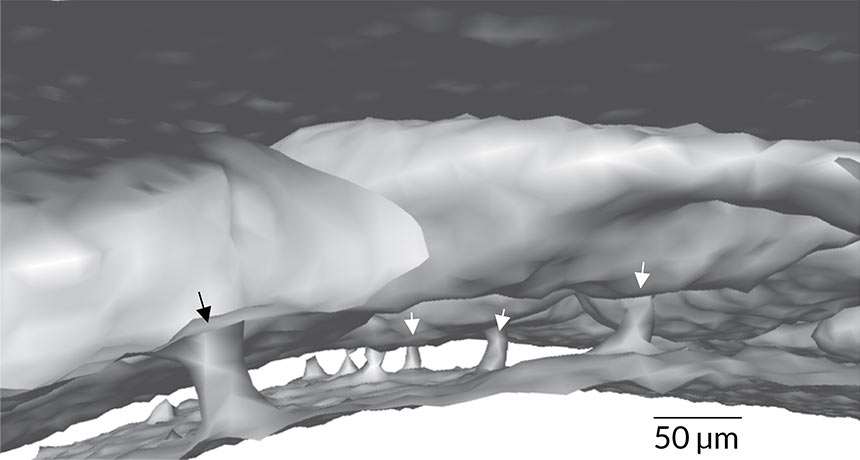Newfound skull tunnels may speed immune cells’ trek to brain injuries
These tiny shortcuts showed up in the bone of mice and humans

HOLES IN HEAD A mouse skull is full of microscopic channels (arrows) that connect the bone to the brain’s outer membrane, an imaging method called a micro CT scan shows. Similar channels were found in people’s skulls.
Gregory Wojtkiewicz/Center for Systems Biology/Mass. Gen. Hosp.